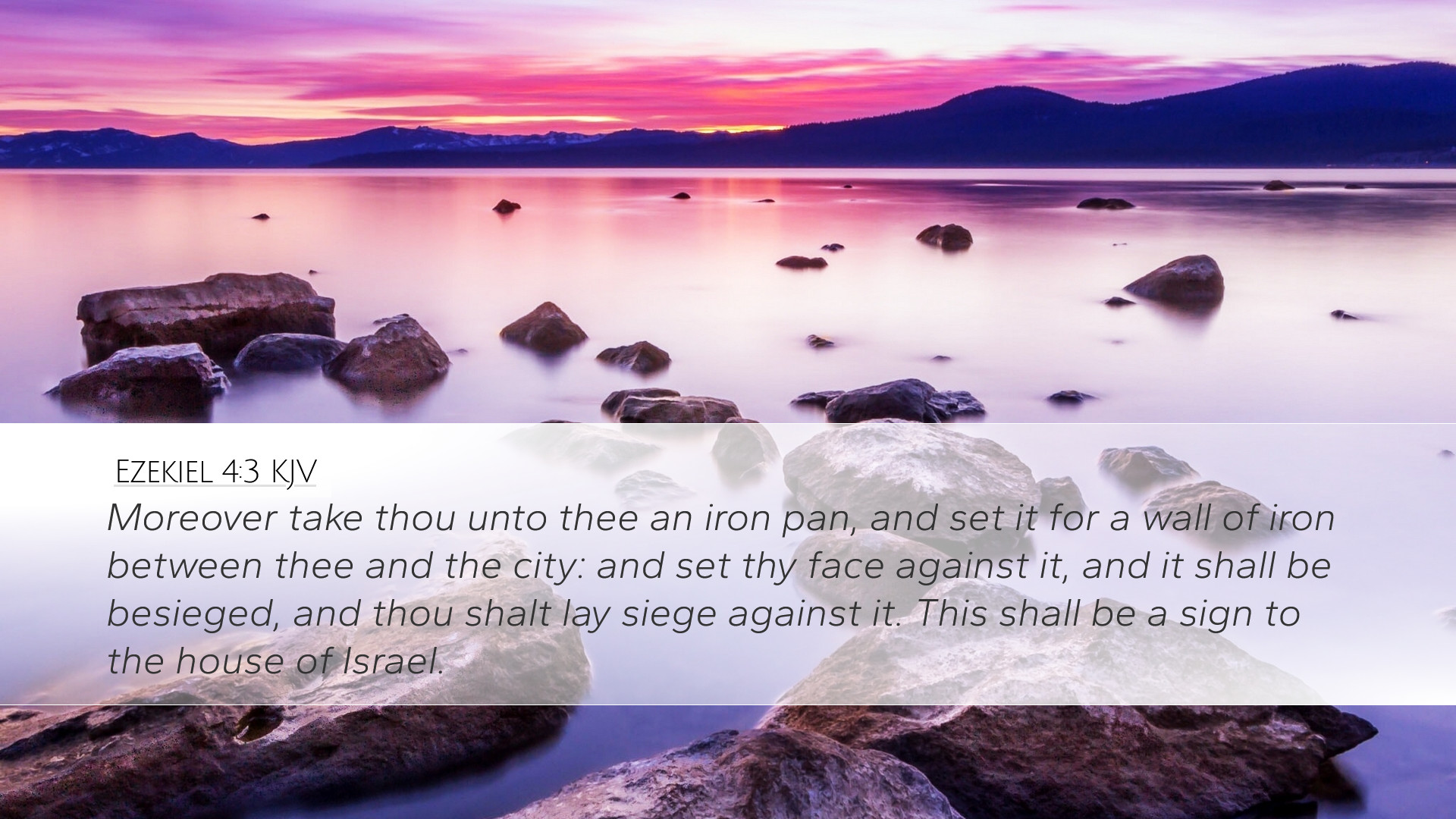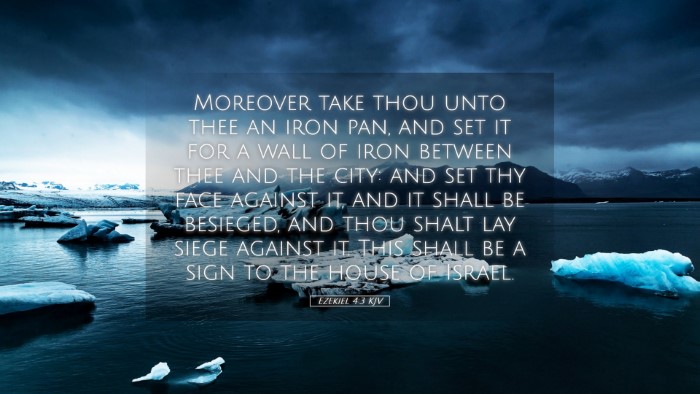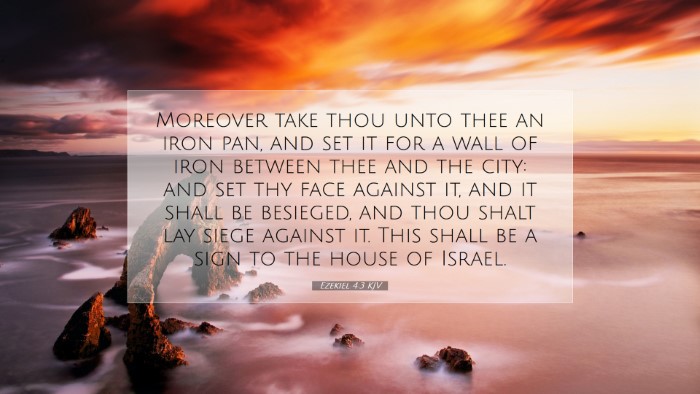Ezekiel 4:3 - A Commentary Overview
Text: "Moreover take thou unto thee an iron pan, and set it for a wall of iron between thee and the city: and set thy face toward it, and it shall be besieged, and thou shalt lay siege against it. This shall be a sign to the house of Israel."
Context and Background
The Book of Ezekiel is a unique prophetic work that contains vivid imagery and dramatic actions. Ezekiel, a priest and prophet during the Babylonian exile, communicates God’s message through symbols and allegories. This chapter involves a series of symbolic acts that serve as parables to Israel, conveying the seriousness of their sin and impending judgement.
Ezekiel 4 is set against the backdrop of the impending siege of Jerusalem, capturing the attention of its inhabitants with stark visual aids. This act of laying siege is not just a physical representation; it emphasizes the spiritual condition of Israel whose disobedience has led to divine judgement.
Symbolism of the Iron Pan
-
Iron Pan as a Barrier: The iron pan symbolizes a barrier between God and His people, representing the hardness of heart that prevents them from heeding God's warnings. Albert Barnes notes that this imagery expresses the impenetrability of the siege, as well as the separation caused by Israel's sin.
-
God’s Judgment: The act of setting the iron pan signifies the judgment about to fall upon Jerusalem. Matthew Henry highlights that God’s judgments can create a division not only from Him but also between the people and their hope of restoration.
-
Significance of the Iron: According to Adam Clarke, iron symbolizes strength and unyieldingness, pointing to the severity of the siege and the determination with which God’s judgments will be executed against the city due to the persistent rebellion of Israel.
Prophetic Act: A Sign to Israel
Ezekiel’s actions serve as a prophetic declaration, meant to be a sign to the house of Israel. This dramatic demonstration is designed to invoke deep reflection among the people regarding their ways. The posture of Ezekiel setting his face towards the city accentuates the prophetic focus on their sinful state and God’s impending judgment.
Matthew Henry states that engaging in such a vivid act not only captures the attention of the Israelites but also underscores the need for repentance. The physical representation aligns with their spiritual condition, revealing the gravity of the situation they are facing.
Theological Implications
Ezekiel 4:3 carries significant theological implications concerning God’s holiness and justice. The reference to an iron pan as a division illustrates the serious consequences of sin and unfaithfulness. God’s covenant relationship with Israel is marred by their transgressions, leading to an inevitable confrontation with divine judgment.
Albert Barnes elaborates that God's holiness cannot allow sin to go unpunished. The visual acts serve to remind the audience of the serious nature of their covenant obligations and the consequences of failing to uphold them. The image of the besieged city embodies not just a physical state but also a spiritual reality of isolation from God’s favor.
Application for Pastors and Theologians
For pastors and theologians, this text invites reflection on the role of prophetic voices in the modern church. Just as Ezekiel acted as a visible sign to the Israelites, contemporary leaders must seek creative and impactful ways to address the spiritual condition of their congregations.
-
Need for Repentance: The urgency of repentance and the recognition of God’s judgment upon sin is a consistent theme that transcends time. Churches today should echo this call to turn back to God, presenting clear warnings against complacency in the faith.
-
Symbolic Acts: Like Ezekiel’s actions, pastors might consider how their messages can be embodied through actions that convey deeper spiritual truths. The integration of worship, prayer, and community action can serve as powerful reminders of the gospel’s implications.
-
Communicating God’s Holiness: It is crucial that the holiness of God is communicated effectively, aligning the church’s teachings with the reality of His justice and mercy. Understanding the serious consequences of sin is essential for a holistic approach to teaching that encourages spiritual growth and holiness.
Conclusion
Ezekiel 4:3 serves as a profound reminder of the seriousness of sin and the comprehensive nature of divine judgment. Through the symbolism of the iron pan, there emerges a vivid depiction of separation from God as a result of disobedience. This text invites both immediate reflection and sustained engagement from the faith community about their own spiritual status and the need for alignment with God’s will.
In studying and teaching this scripture, it is essential for church leaders to emphasize the balance between God’s justice and His invitation to repentance. The prophetic imagery compels us to recognize not only the reality of God's judgement but also His enduring grace and the hope of restoration for all who turn back to Him.


